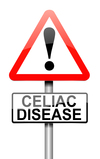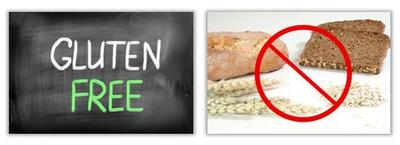

What is Celiac Disease?
The National Institutes of Health (NIH) defines celiac disease as an immune disease in which people can't eat gluten because it will damage their small intestine. Gluten is a protein found in wheat, rye, and barley. It is found mainly in foods but may also be in other products like medicines, vitamins and supplements, lip balm, and even the glue on stamps and envelopes.
What are related symptoms?
Celiac disease affects each person differently. Symptoms may occur in the digestive system, or in other parts of the body. One person might have diarrhea and abdominal pain, while another person may be irritable or depressed. Irritability is one of the most common symptoms in children. Some people have no symptoms.

What is a Gluten-Free Diet?
A gluten-free diet is stricter than a wheat-free diet. It means eliminating wheat, rye, and barley (along with all by-products and varieties of these grains). The only treatment for Celiac Disease is a lifelong gluten-free diet, as even trace amounts of gluten can damage the small intestine.
For more information related to this topic, visit Eat Right for Life's health library regarding Celiac Disease.






